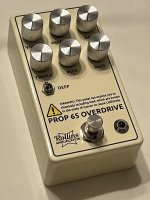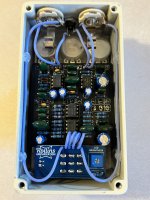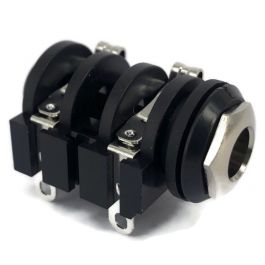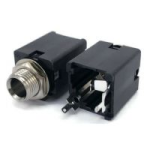synthesiserror
Well-known member
- Build Rating
- 5.00 star(s)
I haven't seen anyone else post a build report of this one yet. I finished it a few days ago and I've had a little time to play around with it.
First, the good. The circuit is dead quiet- nice job with the layout, it was well worth the wait. There is a ton of usable gain on tap. I'm going to compare this to the Sanguine and Tyrian builds I've done previously, because I have had both of them on my board for a while in a dual enclosure, and they're all higher-gain amp-in-a-box pedals with 3-band EQ. This SLO clone has a lot more versatility than the Sanguine and doesn't sound as sterile when the mids are scooped. I tend to dial the Tyrian at a lower gain, aggression-off setting while pushing the mids. I think the Tyrian sounds better in this overdrive territory, but the Lead Solder sounds better than the Tyrian when cranked up; Tyrian gets kind of muddy at the higher gain settings.
One "feature" of this pedal is that it doubles as a tone generator. When you dime the mids, the pedal will oscillate at any gain setting. The frequency of the oscillation interacts with the other tone controls.
*Update* moving the input and output wires away from the PCB has resolved the oscillation. See posts below.
The "deep" switch pretty much does what it says, adding a little bit of low-end resonance.
I built the board to spec minus the jumpered CLR and LED. I know a lot of y'all have contempt for the green dipped mylar caps, but I like to use them where possible because they're cheap and they sound great. They crowd together on some boards, but this layout has plenty of room for them. No real surprises with this build.
I did have to make a special order to SBP for the Zener diodes and C25K presence pot. Tayda was out of any brand of B250K pots, so I've got pots from 3 vendors here. I had some breakout boards printed that relocate the LED and allow you to adjust brightness, so the new CLR is 820R in series with a 50K trimpot. This range is what I found to be the most usable for waterclear color LEDs.
For the enclosure, I decided to go with a nice cream powdercoat which evokes warm memories of the nicotine-stained paint chips I snacked on as a child. Graphics are a regular waterslide inkjet decal with a lacquer film coat (my usual technique).


First, the good. The circuit is dead quiet- nice job with the layout, it was well worth the wait. There is a ton of usable gain on tap. I'm going to compare this to the Sanguine and Tyrian builds I've done previously, because I have had both of them on my board for a while in a dual enclosure, and they're all higher-gain amp-in-a-box pedals with 3-band EQ. This SLO clone has a lot more versatility than the Sanguine and doesn't sound as sterile when the mids are scooped. I tend to dial the Tyrian at a lower gain, aggression-off setting while pushing the mids. I think the Tyrian sounds better in this overdrive territory, but the Lead Solder sounds better than the Tyrian when cranked up; Tyrian gets kind of muddy at the higher gain settings.
One "feature" of this pedal is that it doubles as a tone generator. When you dime the mids, the pedal will oscillate at any gain setting. The frequency of the oscillation interacts with the other tone controls.
*Update* moving the input and output wires away from the PCB has resolved the oscillation. See posts below.
The "deep" switch pretty much does what it says, adding a little bit of low-end resonance.
I built the board to spec minus the jumpered CLR and LED. I know a lot of y'all have contempt for the green dipped mylar caps, but I like to use them where possible because they're cheap and they sound great. They crowd together on some boards, but this layout has plenty of room for them. No real surprises with this build.
I did have to make a special order to SBP for the Zener diodes and C25K presence pot. Tayda was out of any brand of B250K pots, so I've got pots from 3 vendors here. I had some breakout boards printed that relocate the LED and allow you to adjust brightness, so the new CLR is 820R in series with a 50K trimpot. This range is what I found to be the most usable for waterclear color LEDs.
For the enclosure, I decided to go with a nice cream powdercoat which evokes warm memories of the nicotine-stained paint chips I snacked on as a child. Graphics are a regular waterslide inkjet decal with a lacquer film coat (my usual technique).


Last edited:





